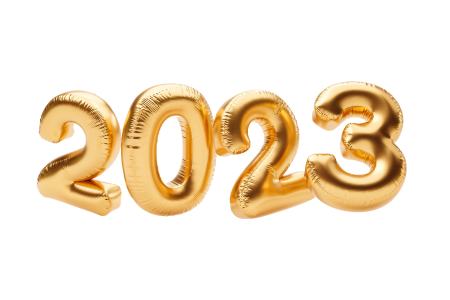8 of my favorite tips for 2023
I’m a poor resolver. For many years, my New Year’s Resolution was “I resolve not to resolve,” which made me a bit of a Grinch at New Year’s Day parties.

But if you’ve resolved to become a better writer this year, here’s help — eight of my favorite 2023 writing resolutions to make today:
1. Make it a metaphor.
It’s tempting to call metaphor the magic wand of a writer’s repertoire, the Penn and Teller of the page.
Metaphor has the power to persuade far better than literal language. It lets you say in five words what would otherwise take five paragraphs to explain. It makes readers’ brains light up, helps them think more broadly about your message — even (ahem!) gives the illusion that the communicator is more attractive.
So yes, that simile does make your butt look better.
Learn to write better metaphors.
2. Do your homework.
“Without great reporting, a story is like one big comb-over,” says Ann Hull, Pulitzer Prize-winning reporter for The Washington Post. “You can see it from the third paragraph.”
Too many brand messages don’t even attempt to hide the bald spot.
Have you been relying on the subject-matter-expert’s deck, an email exchange or a 5-W’s interview to craft a compelling story? You probably need to make a date with your BFF and research assistant Google for some solid background research as well.
Get goods at getting the goods.
3. Think Outside the Pyramid.
The feature-style story structure has been proven in the lab to increase readership, understanding, memory and satisfaction. The inverted pyramid has been proven in the lab to reduce these things.
Let’s make 2023 the year we stop using this 178-year-old hierarchical blurtation of facts. OK? Please?
Learn a structure that outperforms the pyramid.
4. Stop writing about “us and our stuff.”
Call it selfish empathy. Or maybe narcissistic altruism.
The more you focus on the reader and the reader’s needs, the more you’ll draw readers into your message and move them to act.
The more you drone on and on about your organization and its products, services, programs and ideas, the less readers will read what you want them to read and do what you want them to do.
So what is the actual purpose of your message again?
Learn to write for the reader.
5. Don’t stop at the subject line.
The subject line is only one of four elements your recipients use to decide whether to open your email, delete without reading or put your message in the spam filter.
Are you crafting powerful preheaders, preview panes and from lines? Or are you ignoring the other 75% of elements that convince recipients to open?
Learn to “address the envelope.”
6. Steal a tip from The New York Times.
The most common length of a quote in the Times is seven words, plus attribution.
How long are your quotes? Would they be twice as good if they were half (or one-tenth) as long?
Turn lame-ass quotes into snappy sound bites.
7. Hit return more often.
People skip long paragraphs. So if your paragraph is too long, you might as well stamp on it in red ink: “Don’t bother reading this.”
Want people to read your message? Write short paragraphs.
Find out how long is too long.
8. Reach readers on the small screen.
More than half of your audience members read your webpages, social content, emails and newsletters on their phones.
Problem is, there are more differences between writing for mobile vs. writing for laptops than there are for writing for the web vs. writing for print.
Learn how to reach readers on their smartphones.
Resolve to be a better writer this year …
Follow through on these resolutions, and you’ll soon be reaching more readers and moving them to act.
Happy New Year!
Leave a Reply